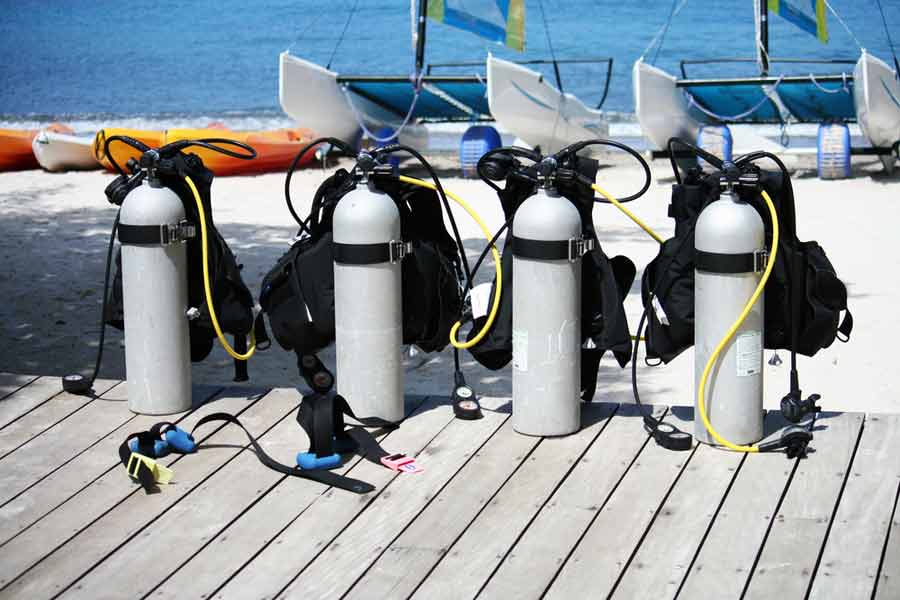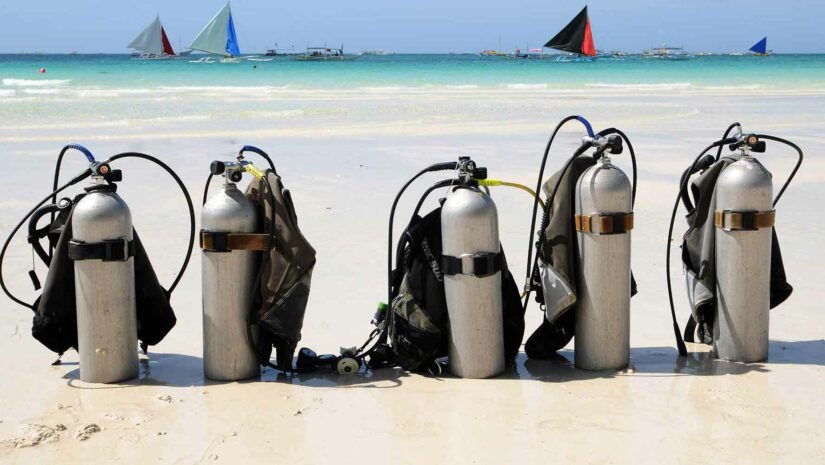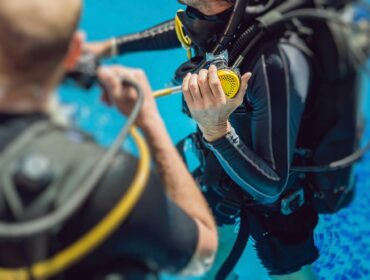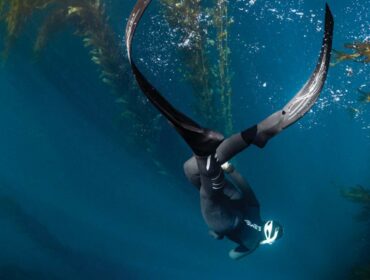There are a lot of misconceptions when it comes to scuba diving gases. Contrary to popular belief, scuba divers don’t only breathe oxygen underwater. After all, we don’t breathe pure oxygen above water either. The air we breathe is a mixture of various gases, mainly nitrogen and oxygen, with small amounts of carbon dioxide, argon, and other gases. It makes perfect sense that scuba tanks can also contain mixtures of different gases that will allow divers to reach further depths below the ocean’s surface.
The most commonly used scuba air mixture is atmospheric air, which allows for dives of less than 40 meters. This is considered the safest acceptable depth by most training agencies. Divers can go much deeper and explore for longer with mixtures such as nitrox, heliox, and hydrox, as these are safer alternatives to pure compressed air. These mixes offer more diving freedom, but they do require their own certifications before a diver can use them.
If you’re interested in trying out any of these mixes, here are a few quick facts about each of them.
Scuba Tank Air Composition

Nitrox
Regular air is over three-quarters nitrogen, less than one-quarter oxygen, and trace amounts of other gases. Nitrox typically increases the amount of oxygen to between 22% and 40% of the total gas volume, but divers usually use between 32% and 36% (also known as EAN32 and EAN36).
This scuba diving gas mixture is the second most commonly used in scuba diving, as it significantly reduces the chances of suffering from decompression sickness, also known as the bends. It also allows for longer bottom time, although not as deep as they could with air. This makes it ideal for repetitive diving, where divers have to complete multiple dives in a day, up to a week or so, and for accelerating in-water decompression stops.
Be warned that there are risks involved with using nitrox. Exceeding the limits for a dive with nitrox can lead to inhaling oxygen at an unsafe partial pressure, which can eventually lead to oxygen toxicity. Therefore, you’ll need special training and to know how to use a gas analyzer before you can use it, as the smallest difference in oxygen concentration can significantly affect your safe depth and time in the water.
Trimix & Heliox
With Trimix, oxygen and nitrogen are partially replaced with helium. This allows divers to go beyond recreational depth limits (deeper than nitrox allows) with less risk of oxygen toxicity. Those who use this mixture normally use different blends to suit each particular dive, but there are generally three main blends:
- Hyperoxic – Contains a higher level of oxygen than air; therefore, it restricts diving to shallower depths compared to air.
- Normoxic – Contains the same level of oxygen as air; therefore, it allows diving to the same depths as air.
- Hypoxic – Has less oxygen concentration than normal air. It allows divers to go deeper, but it also means it can’t be used at the surface, so divers have to use what they call “travel gases” until they can swim to a depth where they can switch to the hypoxic trimix.
Heliox, on the other hand, is a diving gas mix that may have the same amount of oxygen as regular air (although typically less), but completely replaces the nitrogen with helium. This removal of nitrogen from the mix extends the depth and time limits since the lower percentage of oxygen (compared to nitrox) eliminates the risk of oxygen toxicity. Heliox, however, requires a secondary tank of air or nitrox for use in the shallower sections of the dive.
The most immediate disadvantage of using heliox is the loss of body heat, as helium conducts heat poorly. This allows the body to lose more of its natural heat more quickly, leaving a diver vulnerable to hypothermia. Another disadvantage is the rarity of helium and the associated expenses of gathering it.
Hydrox
Hydrogen is cheaper and much more abundant than helium, making it a cheaper alternative to heliox. Hydrogen has little to no toxicity issues and can be used at all depths up to several hundred meters below the surface.
The main problem with hydrogen is that its use comes with risks due to its extreme flammability when the mixtures contain more than a few percent of both oxygen and hydrogen. Hydrox is relatively new and is used predominantly in extreme commercial diving beyond the depths of trimix or heliox.
Get Proper Training Before Going Mixed Gas Diving
Before diving with gases beyond standard air, be sure to enroll in the proper training course. A common starting point is the PADI Enriched Air Diver Specialty Course, which will teach you how to safely use nitrox with up to 40% oxygen.





